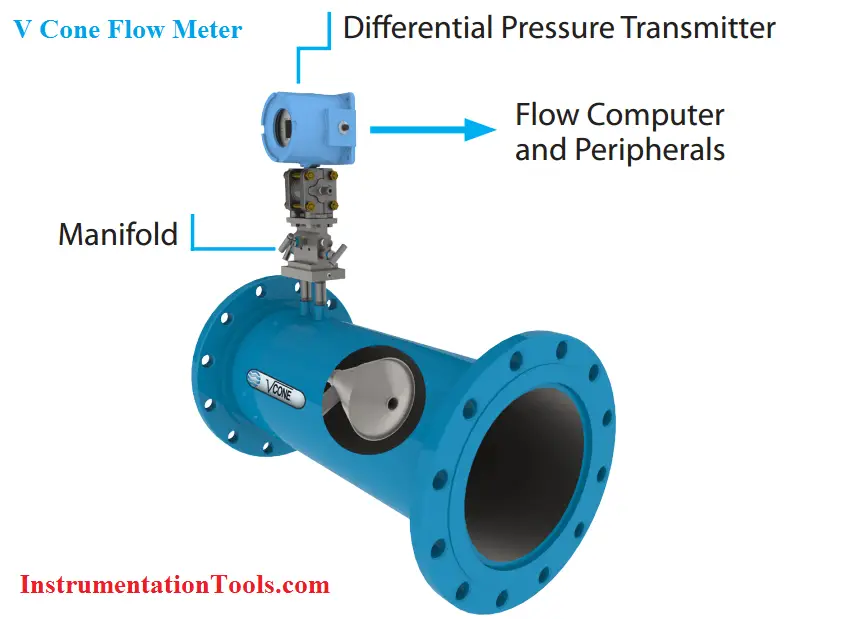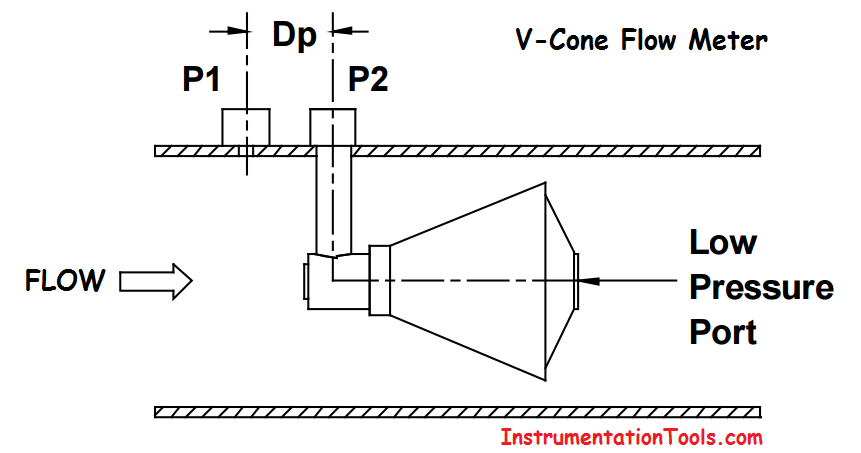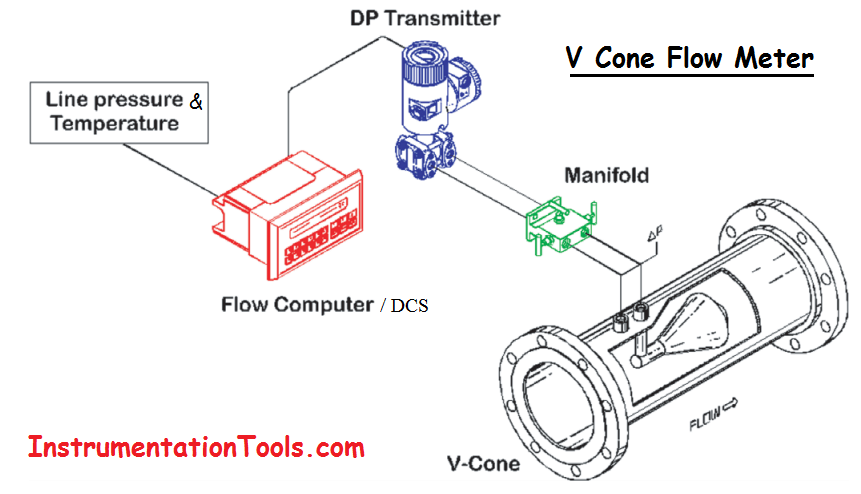The V-Cone flow meter like several other popular meters is a differential pressure (or “DP”) meter. These meters all work according to the same principle of DP flow devices.
That is an obstruction in the pipe (i.e., a reduction in the cross-sectional area available to the flow) causes an increase in flow velocity and a corresponding reduction in pressure.
V Cone Flow Meter
Hence by measuring the upstream pressure, the temperature, and the difference in the static pressure between the upstream and the minimum cross-sectional areas, the flow rate can be determined as long as the fluid properties are known. The flow rate determination is done by applying the laws of conservation of mass and energy.
However, there are important differences between the V-Cone meter design and other DP meter types. These differences give the V-Cone meter important performance advantages.
These advantages include the ability of the V-Cone meter to operate with very short upstream and downstream straight pipe lengths, to create a low total pressure (or “head loss”), to create a very stable DP, to give a large turndown, to create relatively low signal noise and to cope well with liquid and particulates in the gas stream.
Cone meters (e.g. V-cones) are proprietary meters and are essentially an inverted Venturi tube. Instead of a contraction in the pipe, the fluid flows around a central cone as shown in the following diagram.

Cone meters have proved popular as it is claimed they require very little upstream straight pipework before the meter to provide accurate measurements. This benefit is due to the fluid flowing around the cone which is described as “conditioning” the flow.
One of the downsides of cone meters is the lack of standards governing this type of meter, as they have been a proprietary device, and there has been a lack of independent data available to provide confidence in claimed performance.
Unlike Venturi tubes, orifice plates, and nozzles, which are manufactured to tolerances specified in ISO 5167, cone meters are not manufactured to a specified tolerance and must be individually calibrated before use.
Principle of Operation
The V-Cone flow meter is a differential pressure type flow meter. Basic theories behind differential pressure-type flow meters have existed for over a century.
The principal theory among these is Bernoulli’s theorem for the conservation of energy in a closed pipe. This states that for a constant flow, the pressure in a pipe is inversely proportional to the square of the velocity in the pipe.
Simply, the pressure decreases as the velocity increases. For instance, as the fluid approaches the V-Cone flow meter, it will have a pressure of P1.

As the fluid velocity increases at the constricted area of the V-Cone, the pressure drops to P2, as shown in Figure 1. Both P1 and P2 are measured at the V-Cone flow meter’s taps using a variety of differential pressure transducers.
The DP created by a V-Cone flow meter will increase and decrease exponentially with the flow velocity. As the constriction takes up more of the pipe’s cross-sectional area, more differential pressure will be created at the same flow rates.
The beta ratio equals the flow area at the largest cross-section of the cone (converted to an equivalent diameter) divided by the meter’s inside diameter

Advantages of V Cone Flow Meter
- Lower sensitivity than orifice plates and Venturi tubes to installation effects
- Shorter installation lengths
- Less pressure loss than orifice plates
- Wafer (between flange) versions
- Effective for wet gas flow measurement applications
Disadvantages of V Cone Flow Meter
- Lack of standards
- Not as much data available as “ISO 5167” meters
- Pressure loss higher than Venturi tubes
If you liked this article, then please subscribe to our YouTube Channel for Instrumentation, Electrical, PLC, and SCADA video tutorials.
You can also follow us on Facebook and Twitter to receive daily updates.
Read Next:
- Types of Flow Meters
- Turndown Ratio of Flow Meter
- Capacitive Pressure Sensor
- Two-Liquid Manometer Principle
- Interface Level Measurement
thank u sir